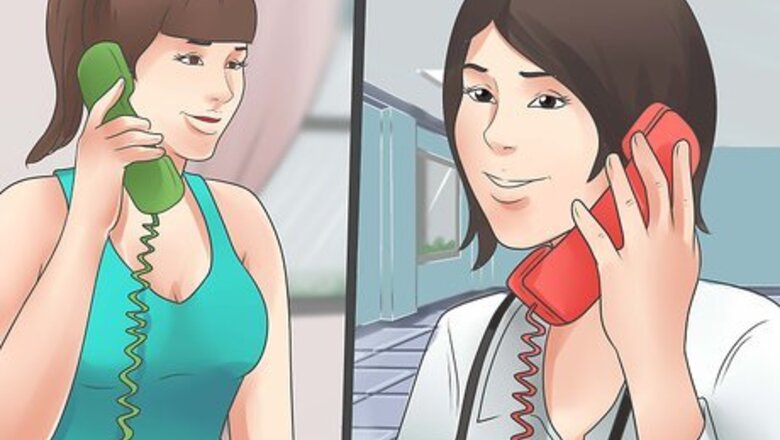
views
Immediate Treatment
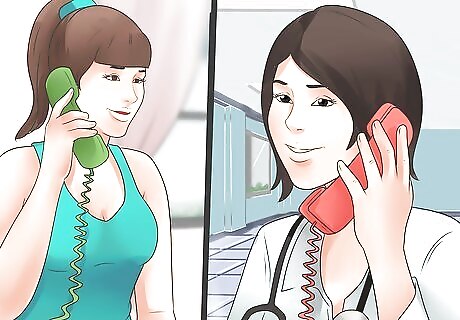
Call a doctor promptly for severe injuries. A severe injury may require surgical reattachment, and should be brought to a doctor's attention as soon as possible. If any of the following symptoms match your condition, your hamstring muscle may be completely torn, or pulled off the bone: A popping sound of feeling at the time of injury. An injury very close to the buttock or knee. A large amount of bruising. Difficulty walking. Severe pain or weakness in injured leg. See Warnings, below, for symptoms that require medical attention at any point in the healing process.
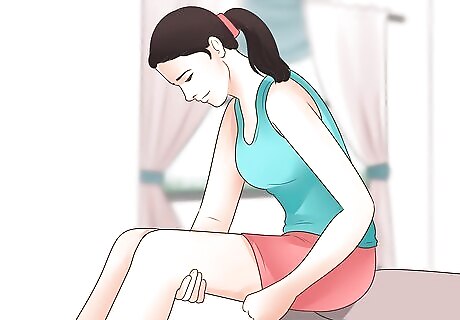
Evaluate the injury. If the location of the injury is not obvious, gently press along the length and circumference of your thigh to locate it. Stretching injuries tend to involve the upper thigh, while sprinting is more likely to tear muscle near the knee. If there is no obvious injury site and there was no impact or fall that may have caused your hamstring to pull, the pain could be due to pelvis or back problems instead. Contact a doctor if you think this might be the case.
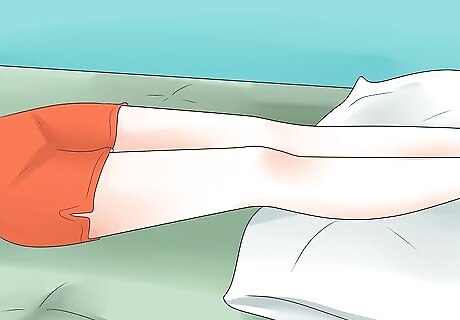
Rest. Get off your feet as soon as you can after injury, even if you only feel mild twinges. Some pulled hamstrings, especially those in the upper thigh, involve damage to a tendon. These feel less painful than muscle injuries, but take longer to heal and still require rest. Walk as little as possible for the first few days, and avoid all running and leg exercises. If walking involves any pain at all, shorten your stride to a non-painful distance. If even a short stride causes pain, use a pair of crutches and visit a doctor.
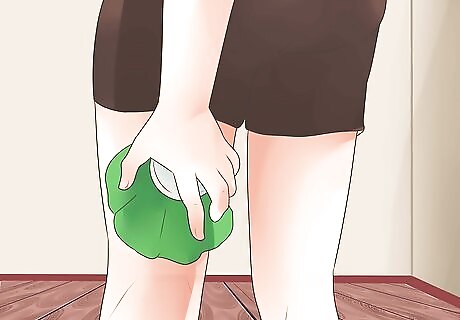
Apply an ice pack once an hour. Use a cold pack, or wrap ice in a wet towel, and place it on the injury site. Leave this on for 10 to 15 minutes, then take it off. Repeat this once an hour during the day you pulled your hamstring. Continue icing once every two or three hours for the next couple days after that. To avoid damage, do not apply ice directly to skin, and do not leave it on for more than 15 minutes. Do not use this treatment if you have Raynaud's phenomenon or other blood circulation issues.
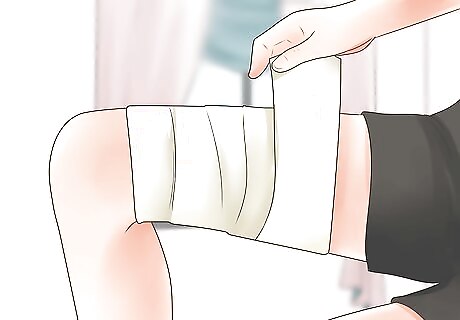
Compress your leg. Wrap an elastic compression bandage or athletic tape around your thigh, starting above the knee and ending about 3 inches (7.5 cm) below the groin. When circling around your leg, make sure each new circle overlaps with about 50% of the last. The end result should be snug, but not uncomfortably tight or cutting off circulation. You can purchase a slip-on thigh wrap from a sporting goods store instead.
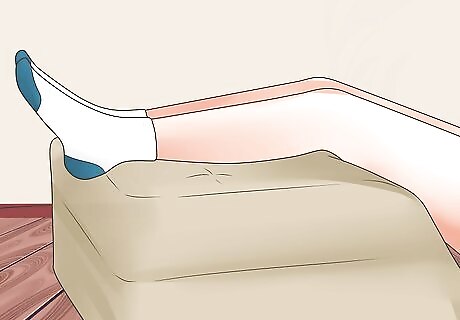
Elevate your leg. To reduce swelling, sit or lie down and prop your leg up on a tall object, so the site of the injury is higher than your heart. Do this as much as possible for the first 24 hours after the injury.
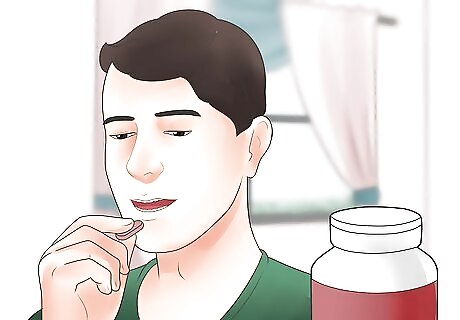
Take painkillers only if necessary. In order to manage pain and potentially reduce swelling, take an NSAID painkiller such as ibuprofen, naproxen, or acetaminophen. These should only be used for short-term pain management in order to minimize side effects, unless you have a recommendation from a doctor. Some doctors discourage their use during this period, due to the possibility of slowed healing. Talk to a doctor first if you have high blood pressure, heart disease, or kidney disease, or if you have had stomach ulcers or internal bleeding issues in the past.
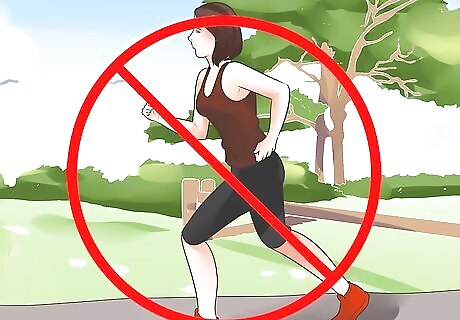
Avoid making it worse. Besides avoiding running and other exercise, stay away from the following for the next few days, until you can walk without pain: Avoid heat (take lukewarm baths or showers) Avoid alcohol Avoid massages
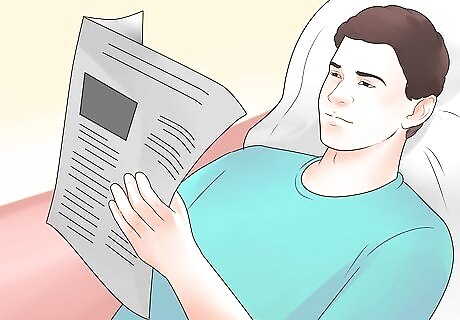
Continue on when daily activities are pain-free. Until you can walk without pain or twinges, ice your injury once every two or three waking hours, for 10 to 15 minutes, and minimize the amount of activity involving your leg. This usually lasts for three or four days after the injury.
Continuing Treatment
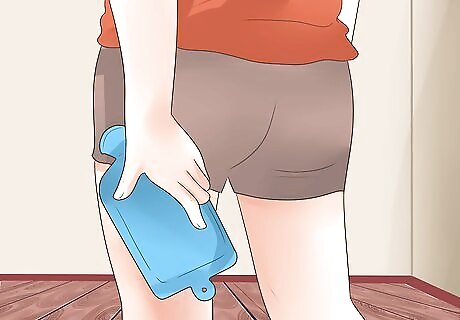
Switch to hot/cold treatment. At this point, instead of icing the injury, you can apply a hot pack for 3 minutes, then a cold pack for 1 minute. Repeat this six times, for a total of 24 minutes. Perform this treatment twice a day until your leg is recovered enough to jog for five minutes without pain. Be aware that this treatment is not completely understood, and some doctors prefer to switch entirely to hot treatments. In general, cold treatment reduces blood flow, while heat increases it. Increased blood flow encourages healing but also increases swelling, so heat should not be used while the injury is still painful and significantly swollen.

Begin gentle stretching exercises. Cautiously begin using one or both of the following stretches, but stop or reduce the amount of stretching immediately if you feel pain at any point. The goal is to slightly stretch the injured area, not to increase your flexibility, so keep these stretches lighter than they normally would be. To begin with, hold each stretch for no more than 10 seconds, relax, then repeat for a set of three to six stretches, depending on your comfort. Do this several times per day. Place your foot on a low table or a chair, and stretch forward from the hip into a comfortable, relaxed position with a gentle stretch at the back of your leg. Lie on your back and lift your leg vertically, or as high as is comfortable. Gently pull back on your thigh with your hands, with your knee slightly bent.
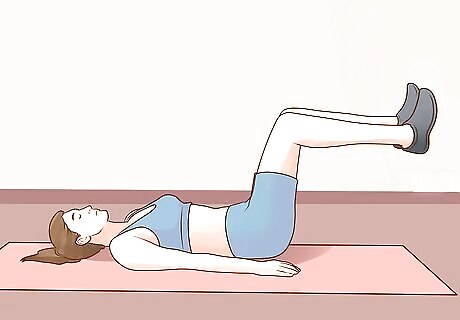
Perform muscle strengthening exercises. If you can stretch without pain, begin additional exercises to get your muscles back to full strength. Ideally, you should consult a doctor to learn which exercises will focus on your injured muscle with minimal risk of damage. If you do not have access to a doctor, try the following once every one to two days, but stop immediately if you experience pain: Lie on your back and bring your knee up to a slight angle. Contract your thigh muscle with about 50% of its maximum force, hold for thirty seconds, then relax and repeat several times. If still pain-free, repeat with your knee at a narrower angle, bringing your foot back up toward your hip. Sit on a wheeled chair or stool and place both heels on the floor, flexing your hamstrings to pull yourself forward. After a few days of this, try using just the heel of the injured leg.
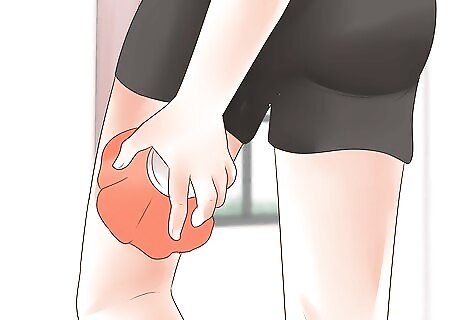
Continue once you've almost reached normal function. After this stage is done, you should be able to jog for a few minutes without pain, and have an almost normal range of movement. A slight pulled hamstring can get through this stage in one to ten days, while a more significant injury can last two to three weeks. An injury that involves a massive tear and severe pain can take many weeks to heal, or may even require surgery.
Regaining Full Function

Stretch dynamically and with full range of motion. Once the injury is essentially healed and you are trying to regain former flexibility, your stretching exercises should involve dynamic motion once every other day, with the leg swinging during the stretch. If you feel pain, stop and return to gentler stretches. Here are a couple examples, but consult a sports injury specialist for advice specific to your needs: Stand on your uninjured leg and gently swing the injured leg forward. The leg should stay relaxed, but swing out as far as is comfortable for you. Do this in three sets of ten reps. Lie on your back and bring your hips into the air, supported on your hands. Cycle your legs upside down.
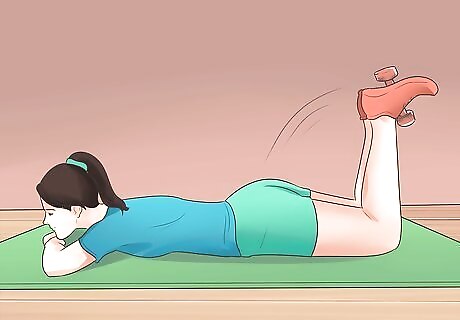
Use more powerful strengthening exercises. There are many ways to strengthen your hamstrings, and a doctor or sports trainer can tell you which methods are best for your purpose. Try performing hamstring curls by lying on your back and lifting your ankle with ankle weights on, eventually progressing to seated hamstring curls, then standing hamstring curls. If you exercise your quadriceps, add these hamstring strengthening exercises to your regular routine. Quadriceps that are much stronger than your hamstring muscles increase the risk of another strain or tear.
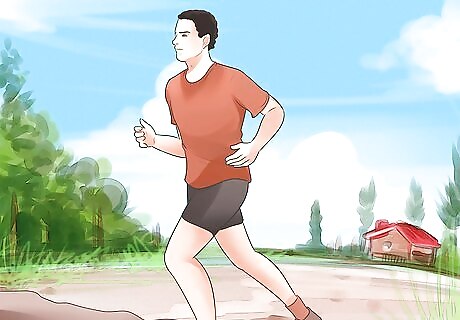
Return to your regular routine gradually. To minimize the chance of re-injury, aim to increase the intensity or duration of your exercise routine by no more than 10% each week.




















Comments
0 comment